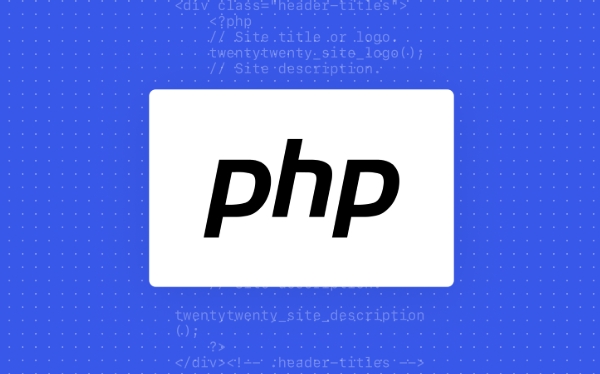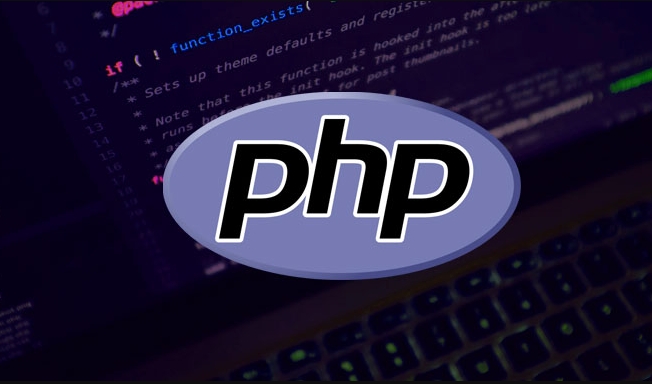There are three main ways to convert date formats in PHP. 1. Use date and strtotime to combine to be suitable for simple conversions in standard formats, such as converting yyyy-mm-dd to dd-mm-yyyy; 2. Use the DateTime class to be suitable for complex scenarios such as addition and subtraction days or object-oriented development; 3. Non-standard formats can be parsed and formatted by regular extraction or third-party libraries such as Carbon.

Date format conversion is a very common requirement in PHP development, such as converting yyyy-mm-dd to dd-mm-yyyy . This operation is actually not difficult, but how to write it depends on what method you use.

Use date and strtotime combination
This is the easiest and most straightforward way. If the date you get is in a standard format (such as 2025-04-05 ), you can directly use strtotime to convert it into a timestamp, and then reformat the output with date .

$date_str = '2025-04-05'; $new_date = date('dm-Y', strtotime($date_str)); // Output 05-04-2025
This approach works for most cases, as long as the original string is in a standard format, there will be no errors. However, be careful about time zone issues. If the server time zone is not set correctly, the result may be deviated. It is recommended to set the time zone in the project:
date_default_timezone_set('Asia/Shanghai');
Use the DateTime class to handle more complex scenarios
If you need to do more, such as adding or subtracting days, formatting different languages, or processing dates in non-standard formats, it is recommended to use DateTime class. It is more flexible and is more suitable for object-oriented style code.

$date_str = '2025-04-05'; $date = new DateTime($date_str); $new_date = $date->format('dm-Y'); // Output 05-04-2025
The advantage of DateTime is that it can be called in a chain, and it can also be used to increase and decrease dates with DateInterval . For example:
- Add one day:
$date->add(new DateInterval('P1D')); - One month off:
$date->sub(new DateInterval('P1M'));
Process dates with Chinese or non-standard formats?
Both of the above methods require input to be in standard format. If the date you encounter is a Chinese description, such as "April 5, 2025", or the format is messy, such as "04/05/2025", it may require regular extraction or third-party library to parse.
For example, using Carbon (Laravel is used by default) is very convenient, and supports various formats and localized displays.
use Carbon\Carbon; $date_str = 'April 5, 2025'; $date = Carbon::createFromFormat('Y year m month d day', $date_str); echo $date->format('dm-Y'); // Output 05-04-2025
However, Carbon is a third-party library and needs to be installed first, which is suitable for a relatively complete project structure.
Let's summarize
- If you just simply convert the format,
date()strtotime()is the fastest - If you want to do more date operations, give priority to
DateTime - When encountering non-standard formats, you can use regular extraction, or introduce libraries like
Carbonto simplify your work
Basically, it depends on your specific needs.
The above is the detailed content of php convert yyyy-mm-dd to dd-mm-yyyy. For more information, please follow other related articles on the PHP Chinese website!

Hot AI Tools

Undress AI Tool
Undress images for free

Undresser.AI Undress
AI-powered app for creating realistic nude photos

AI Clothes Remover
Online AI tool for removing clothes from photos.

Clothoff.io
AI clothes remover

Video Face Swap
Swap faces in any video effortlessly with our completely free AI face swap tool!

Hot Article

Hot Tools

Notepad++7.3.1
Easy-to-use and free code editor

SublimeText3 Chinese version
Chinese version, very easy to use

Zend Studio 13.0.1
Powerful PHP integrated development environment

Dreamweaver CS6
Visual web development tools

SublimeText3 Mac version
God-level code editing software (SublimeText3)
 PHP Variable Scope Explained
Jul 17, 2025 am 04:16 AM
PHP Variable Scope Explained
Jul 17, 2025 am 04:16 AM
Common problems and solutions for PHP variable scope include: 1. The global variable cannot be accessed within the function, and it needs to be passed in using the global keyword or parameter; 2. The static variable is declared with static, and it is only initialized once and the value is maintained between multiple calls; 3. Hyperglobal variables such as $_GET and $_POST can be used directly in any scope, but you need to pay attention to safe filtering; 4. Anonymous functions need to introduce parent scope variables through the use keyword, and when modifying external variables, you need to pass a reference. Mastering these rules can help avoid errors and improve code stability.
 How to handle File Uploads securely in PHP?
Jul 08, 2025 am 02:37 AM
How to handle File Uploads securely in PHP?
Jul 08, 2025 am 02:37 AM
To safely handle PHP file uploads, you need to verify the source and type, control the file name and path, set server restrictions, and process media files twice. 1. Verify the upload source to prevent CSRF through token and detect the real MIME type through finfo_file using whitelist control; 2. Rename the file to a random string and determine the extension to store it in a non-Web directory according to the detection type; 3. PHP configuration limits the upload size and temporary directory Nginx/Apache prohibits access to the upload directory; 4. The GD library resaves the pictures to clear potential malicious data.
 Commenting Out Code in PHP
Jul 18, 2025 am 04:57 AM
Commenting Out Code in PHP
Jul 18, 2025 am 04:57 AM
There are three common methods for PHP comment code: 1. Use // or # to block one line of code, and it is recommended to use //; 2. Use /.../ to wrap code blocks with multiple lines, which cannot be nested but can be crossed; 3. Combination skills comments such as using /if(){}/ to control logic blocks, or to improve efficiency with editor shortcut keys, you should pay attention to closing symbols and avoid nesting when using them.
 How Do Generators Work in PHP?
Jul 11, 2025 am 03:12 AM
How Do Generators Work in PHP?
Jul 11, 2025 am 03:12 AM
AgeneratorinPHPisamemory-efficientwaytoiterateoverlargedatasetsbyyieldingvaluesoneatatimeinsteadofreturningthemallatonce.1.Generatorsusetheyieldkeywordtoproducevaluesondemand,reducingmemoryusage.2.Theyareusefulforhandlingbigloops,readinglargefiles,or
 Tips for Writing PHP Comments
Jul 18, 2025 am 04:51 AM
Tips for Writing PHP Comments
Jul 18, 2025 am 04:51 AM
The key to writing PHP comments is to clarify the purpose and specifications. Comments should explain "why" rather than "what was done", avoiding redundancy or too simplicity. 1. Use a unified format, such as docblock (/*/) for class and method descriptions to improve readability and tool compatibility; 2. Emphasize the reasons behind the logic, such as why JS jumps need to be output manually; 3. Add an overview description before complex code, describe the process in steps, and help understand the overall idea; 4. Use TODO and FIXME rationally to mark to-do items and problems to facilitate subsequent tracking and collaboration. Good annotations can reduce communication costs and improve code maintenance efficiency.
 How to access a character in a string by index in PHP
Jul 12, 2025 am 03:15 AM
How to access a character in a string by index in PHP
Jul 12, 2025 am 03:15 AM
In PHP, you can use square brackets or curly braces to obtain string specific index characters, but square brackets are recommended; the index starts from 0, and the access outside the range returns a null value and cannot be assigned a value; mb_substr is required to handle multi-byte characters. For example: $str="hello";echo$str[0]; output h; and Chinese characters such as mb_substr($str,1,1) need to obtain the correct result; in actual applications, the length of the string should be checked before looping, dynamic strings need to be verified for validity, and multilingual projects recommend using multi-byte security functions uniformly.
 Quick PHP Installation Tutorial
Jul 18, 2025 am 04:52 AM
Quick PHP Installation Tutorial
Jul 18, 2025 am 04:52 AM
ToinstallPHPquickly,useXAMPPonWindowsorHomebrewonmacOS.1.OnWindows,downloadandinstallXAMPP,selectcomponents,startApache,andplacefilesinhtdocs.2.Alternatively,manuallyinstallPHPfromphp.netandsetupaserverlikeApache.3.OnmacOS,installHomebrew,thenrun'bre
 Learning PHP: A Beginner's Guide
Jul 18, 2025 am 04:54 AM
Learning PHP: A Beginner's Guide
Jul 18, 2025 am 04:54 AM
TolearnPHPeffectively,startbysettingupalocalserverenvironmentusingtoolslikeXAMPPandacodeeditorlikeVSCode.1)InstallXAMPPforApache,MySQL,andPHP.2)Useacodeeditorforsyntaxsupport.3)TestyoursetupwithasimplePHPfile.Next,learnPHPbasicsincludingvariables,ech






